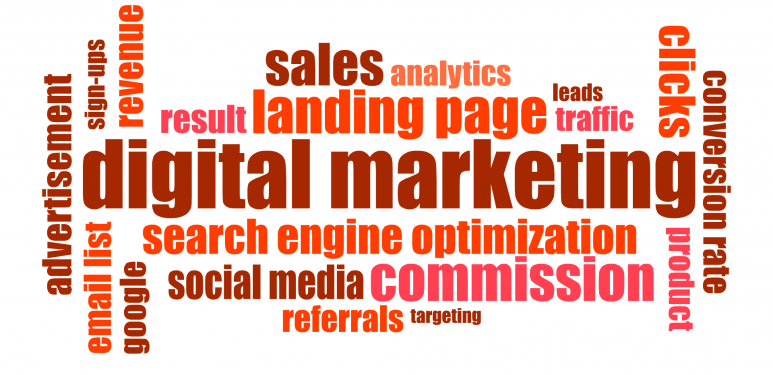Creating a Digital Marketing Strategy for Small to Medium Business
Digital Marketing refers to the digital tactics and platforms a small to medium business can use to, attract, convert and raise awareness with potential prospects and leads. With so many platforms available businesses have more ways than ever to attract potential customers to their website. In a Hub and Spoke model, the digital platforms (Facebook, Twitter, Instagram, etc) are often referred to as “Spokes” while the “Hub” usually refers to the main website. The spokes are little arms of outreach with the goal of driving your audience and prospects back to the Hub ( usually your website) to increase engagement and raise product or service awareness. So in effect, it’s your social media channels that should be the focus of any digital marketing plan. In this 5 part series we will discuss digital marketing strategy and and how to effectively utilize each digital marketing channel to drive more traffic to your site to gain more leads and conversions for your business. Before we can get started we need to have a plan or strategy that clearly defines our goals. Here are the steps for planning your digital marketing strategy:
Define a measurable goal
What do you plan to accomplish? What key performance indicator will measure your success? Are you wanting to sell goods and services or are you focused on creating awareness for your a new product or service? These are two very different goals but both can and must be measurable to be effective. For example, Paula a local restaurant owner wants 50 people to sigh up for a series of wine classes they are offering this fall at her Local Wine Bar. She creates a content calendar and schedule for emails, blogs, social media posts, and Facebook advertising to achieve this. For the class to be profitable she needs to have 50 signups by October 31. In this instance, the number of people sighed up is a clearly defined key performance indicator.
Understand your Audience
Knowing your audience is crucial to any effective digital marketing campaign. What are the characteristics and habits of your ideal customer? If you are not sure create a “buyer persona” to get a bigger picture of your desired audience. Doing so, will allow you to tailor your campaigns and messaging on the digital platforms they engage on, their interests, demographics, etc. If you need help with buyer persona examples head on over to the Alexa blog for some great template examples. Once you have a few, rank them and place them in buckets (the persona that is..). What do they have in common, what products and services might be relevant to each? Once you have those marketing buckets you will be able to tailor your product and/or service messaging around your “buyer personas” to attract potential and existing customers.
Know your Competition
This is crucial for any business and part of any digital marketing strategy. You can learn a lot from your direct competitors. If you don’t already know them, do some research. Which ones offer the same products and services? What do they do well? How can you improve your product, service or marketing message to gain more market share? After you understand what they do well, you can define the unique offerings that differentiate your companies’ products and services from the competition.
Define your Brand
You can’t be everything to everyone. Define what you do best. If you really want to know what that is, ask existing customers why they do business with your company. You might be surprised to know that it’s very different from what you thought. Your company brand defines why your customer chooses you over a competitor. Once you understand that you can very clearly define your brand. Here are a few tips to defining your brand:
- Who is your customer? Remember our “buyer persona” above.
- How do you solve there problem?
- What is your mission statement or brand promise?
Once you’ve answered those questions, sum it up in a simple paragraph. Now cut that paragraph in half and practice sharing your message in person and online via social platforms. It will serve you well when you meet someone new and can concisely communicate your purpose and value. Forget the elevator pitch, its too long and people will be dozing off before you get the to the 3 rd floor if you present yourself like a rambling robot. State your message naturally and then stop talking and listen….
Sigh…so you’ve done the heavy lifting in laying out our digital marketing strategy. Well almost, but at the minimum you now have a clear focus on your business goals, target audience, competition and what you hope to achieve. In the next installment we’ll explore the various digital marketing channels and how to best use them.
TrueITPros is an Atlanta Managed Service Provider delivering managed IT Services, IT Support, and Digital Marketing to small and medium sized businesses. Our IT consulting service includes supporting clients both locally and remotely as needed. TrueITPros service area includes the metro Atlanta area including the following cities: Dunwoody, Roswell, Alpharetta, Johns Creek, Marietta, Norcross, Decatur, Buckhead, Kennesaw, Duluth, Snellville, Brookhaven and Lilburn Many of our clients have multiple locations and out of state locations too.
If you are looking for IT Support in Atlanta please call us at (678)534-8776 or email us.

